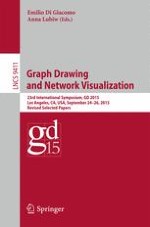2015 | OriginalPaper | Buchkapitel
The Degenerate Crossing Number and Higher-Genus Embeddings
verfasst von : Marcus Schaefer, Daniel Štefankovič
Erschienen in: Graph Drawing and Network Visualization
Aktivieren Sie unsere intelligente Suche, um passende Fachinhalte oder Patente zu finden.
Wählen Sie Textabschnitte aus um mit Künstlicher Intelligenz passenden Patente zu finden. powered by
Markieren Sie Textabschnitte, um KI-gestützt weitere passende Inhalte zu finden. powered by
